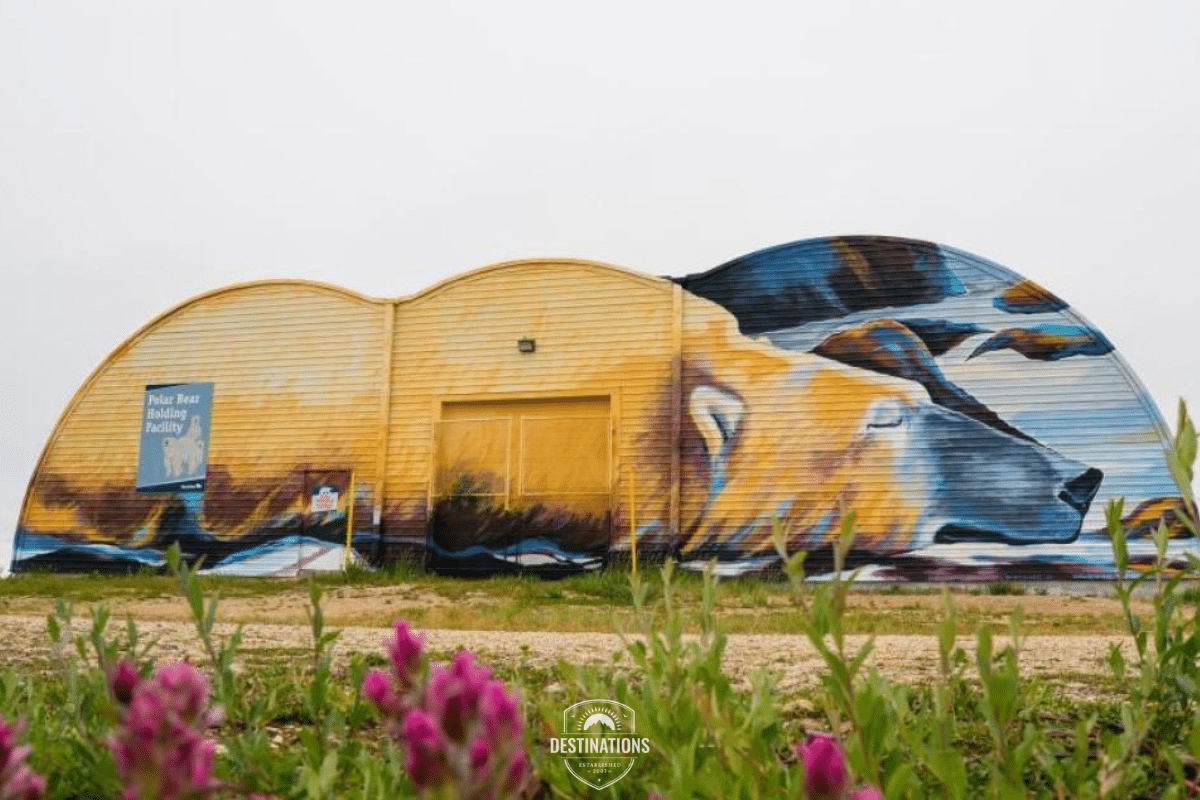
In the small town of Churchill, Manitoba, murals have become more than just art—they tell the story of how climate change is affecting both the community and the wildlife that call this region home. Known as the “Polar Bear Capital of the World,” Churchill has become a symbol of the environmental challenges threatening the Arctic ecosystem and the livelihoods of its 800 residents. The murals in this Canadian city tell residents’ personal climate change stories.
You’ll find that the town’s murals, created by international artists through the Pangea Seed Foundation’s Sea Walls project, speak life into the struggles facing the region. These large-scale artworks were completed in 2023 and are part of a global effort to raise awareness about ocean conservation and climate change. In Churchill, though, these murals are much more personal, and represent the town’s unique battle against rising temperatures and flooding, which are causing the destruction of vital infrastructure.
The polar bears that frequent Churchill’s shores are struggling to survive and climate change is thought to be the culprit. Ice forms later in the season than it has traditionally and this is leaving bears stranded onshore longer and unable to hunt their primary food source, seals. The murals in Churchill capture this issue, and show the fragility of the balance between humans and wildlife in a region where both grapple with the effects of a warming planet.
One of the most impressive of the murals is Kal Barteski’s Peace + Circumstance, which depicts a peacefully resting polar bear. The mural is cleverly painted on the side of Churchill’s polar bear holding facility, and reminds visitors of the care required to protect humans and bears in the region. This mural, like many others, is a plea for balanced harmony between nature and the desire for human progress.
For the artists who contributed to the murals, getting to Churchill and completing their works was not easy. There was a major flood that washed out the town’s rail line, and with no roads and very few boats coming in to port, they had to fly in most of their supplies. The effort was worth it—not just for the murals, but for a renewed sense of community spirit these murals brought to Churchill.
Visit Churchill to see these murals and experience a glimpse into the personal and environmental challenges faced by one of the most remote towns on Earth. The murals in this Canadian city tell residents’ personal climate change stories.

 4 Must-Visit Destinations in the Land of Untamed Beauty
4 Must-Visit Destinations in the Land of Untamed Beauty